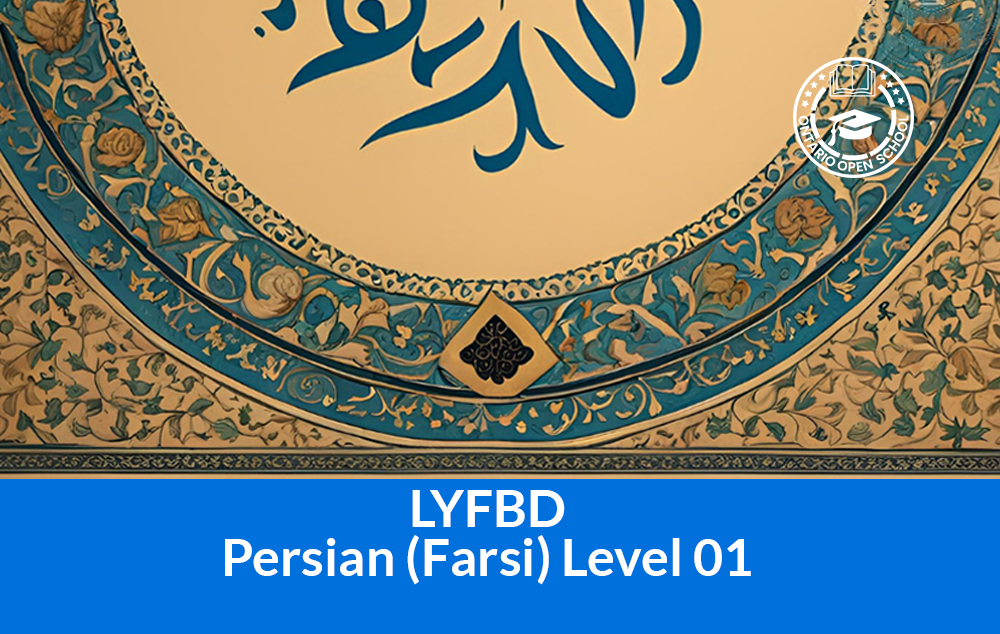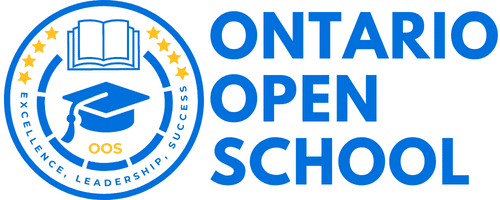- info@ontarioopenschool.com
- 647-494-4499
-
Unit 100 - 29 Gervais Drive, North York, ON.
M3C 1Y9
Copyright 2024 Ontario Open School Inc. All Rights Reserved.
This course offers students opportunities to further develop their knowledge of the international language and to enhance their communication skills. Students will use increasingly sophisticated language in a variety of activities that will enable them to speak and write with clarity and accuracy. Students will also enhance their thinking skills through the critical study of literature, and continue to explore aspects of the culture of countries where the language is spoken through a variety of print and technological resources.
Unit Order | Unit Name | Suggested Time |
|---|---|---|
| Unit 1 | Communicate and Interact Speak with a smooth pace, appropriate intonation, and standard pronunciation in brief, rehearsed communications in the Farsi language about a variety of familiar topics Produce brief, rehearsed messages in the Farsi language to communicate information about matters of personal interest and familiar topics, with contextual, auditory, and visual support | 25 hours |
| Unit 2 | Conversation strategists and intercultural understanding Identify and use a range of conversation strategies to suit a variety of structured, guided, formal, and informal situations while participating in simple spoken interactions in the Farsi language communicate information orally in the Farsi language about communities where the Farsi language is spoken, including aspects of their cultures and their contributions to the world, and make connections to personal experiences and their own and other communities | 25 hours |
| Unit 3 | Reading comprehension and awareness of sociolinguistic conversations
| 25 hours |
| Unit 4 | The writing process
| 27 hours |
| Final Evaluation 30% | Final Assignment & Presentation Final Exam | 6 hours 2 hours |
| Total | 110 Hours |
A wide variety of instructional strategies are used to provide learning opportunities to accommodate a variety of learning styles, interests and ability levels. These strategies include but are not limited to:
| Strategies marked with “X” are used in the course. | ||||
| Direct Instruction (teacher-led) | X | Class Activity (teacher facilitation) | X | |
| Direct Instruction (discussion possible) | X | Experiential learning (learn by doing) | X | |
| Class Discussion (teacher facilitated) | X | Worksheets/Surveys | X | |
| Small Group Discussion | X | Individual or Group Research | X | |
| Partner Discussion/Conferencing | X | Teacher modeling | X | |
| 1:1 Conferencing Teacher & Student | X | Text-based modeling | ||
| Teacher reading to class | X | Use of Computers / Internet | X | |
| Use of video tape or audio materials | X | |||
| Group based reading | X | Role Playing | ||
| Independent Work (teacher facilitation) | X | Presentations | X | |
| Group Work (teacher facilitation) | X | Guest Speaker / Interviews / Questions | ||
| Brainstorming | X | Field Trip | ||
Purpose
The primary purpose of assessment is to improve student learning. Assessment relates directly to the expectations for the course.
A variety of assessments for and as learning are conducted on a regular basis to allow ample opportunities for students to improve and ultimately demonstrate their full range of learning and for the teacher to gather information to provide feedback. Assessment tasks relate to the success criteria set out in lesson plans. Success criteria allow students to see what quality looks like.
Evaluation is the process of judging the quality of student work in relation to the achievement chart categories and criteria and assigning a percentage grade to represent that quality. Evaluation is based on gathering evidence of student achievement through:
Assessment for Learning – we provide feedback and coaching. Assessment FOR Learning is the process of seeking and interpreting evidence for the use of learners and their teachers to decide where the learners are in their learning, where they need to go, and how best to go there.
Assessment as Learning – we help students monitor progress, set goals, reflect on their learning
Assessment AS Learning is the process of the explicit fostering of students’ capacity over time to be their own best assessors, but teachers need to start by presenting and modeling external, structured opportunities for students to assess themselves.
Assessment of Learning – we use assessments to provide evaluative statements about student achievement. Assessment OF Learning is the assessment that becomes public and results in statements of symbols
(marks/grades/levels of achievement) about how well students are learning. It often contributes to pivotal decisions that will affect students’ future.
ASSESSMENT TOOLS
| Units | Duration | Overall Expectations | AFL | AAL | AOL |
K 25% |
A 25% |
C 25% |
T 25% |
||
| A | 26 | A1-A3 | Student-Teacher Conferencing | Peer Assessment
Role Playing |
Poster Presentation
Assignment |
√ | √ | √ | √ | ||
|
70% |
B | 26 | B1-B3 | Anticipation Chart
Class Discussion |
KWL Chart
Role Playing |
Unit Test
Class Discussion |
√ | √ | √ | √ | |
| C | 28 | C1-C3 | Worksheet
Pair Discussion |
Learning Log
Venn Diagram |
Unit Test Culminating Activity |
√ | √ | √ | √ | ||
| D | 30 | D1-D3 | Homework
Student – Teacher Conferencing |
Reflective Discussion | Unit Test
Portfolio Assignment |
√ | √ | √ | √ | ||
| 30% | A1-D# | Final Project 10% (Individual Presentation)
and Final Exam 20% (Written Component) |
√ |
√ |
√ |
√
|
|||||
Resources
Growing Success: Assessment Evaluation and Reporting in Ontario Schools, First Edition Covering Grades 1-12
http://www.edu.gov.on.ca/eng/policyfunding/growSuccess.pdf
Grading
Weighting of categories
| Knowledge/Understanding | Thinking/Inquiry | Communication | Application |
| 25% | 25% | 25% | 25% |

Course Grade | International Language |
|---|---|
Course Code | LYFBD |
Course Category | Classical Studies and International Languages |
Course Type | Academic |
Course Delivery | Online |
Course Duration | 8hrs |
Course Credit | 0 |
Copyright 2024 Ontario Open School Inc. All Rights Reserved.
